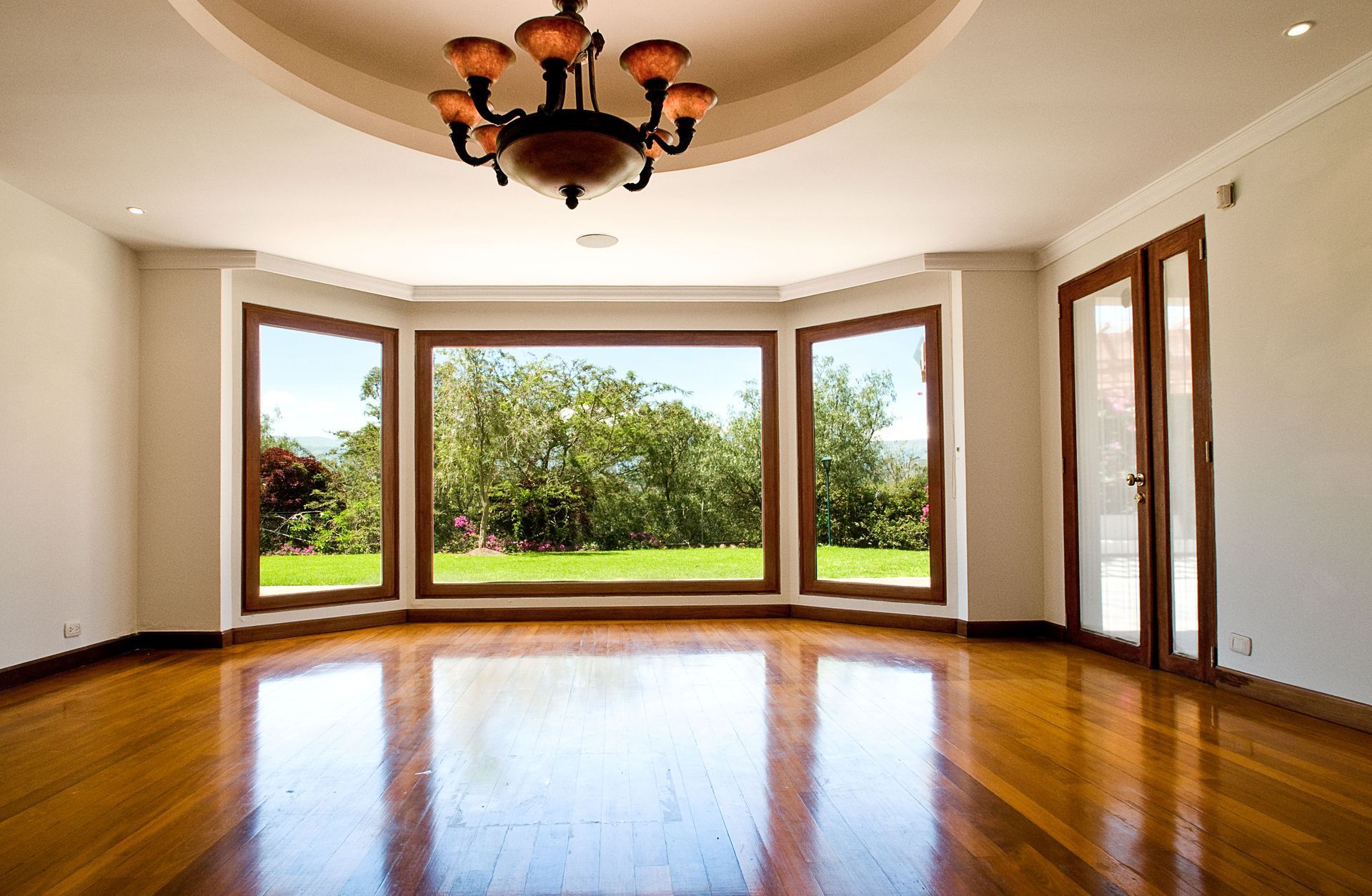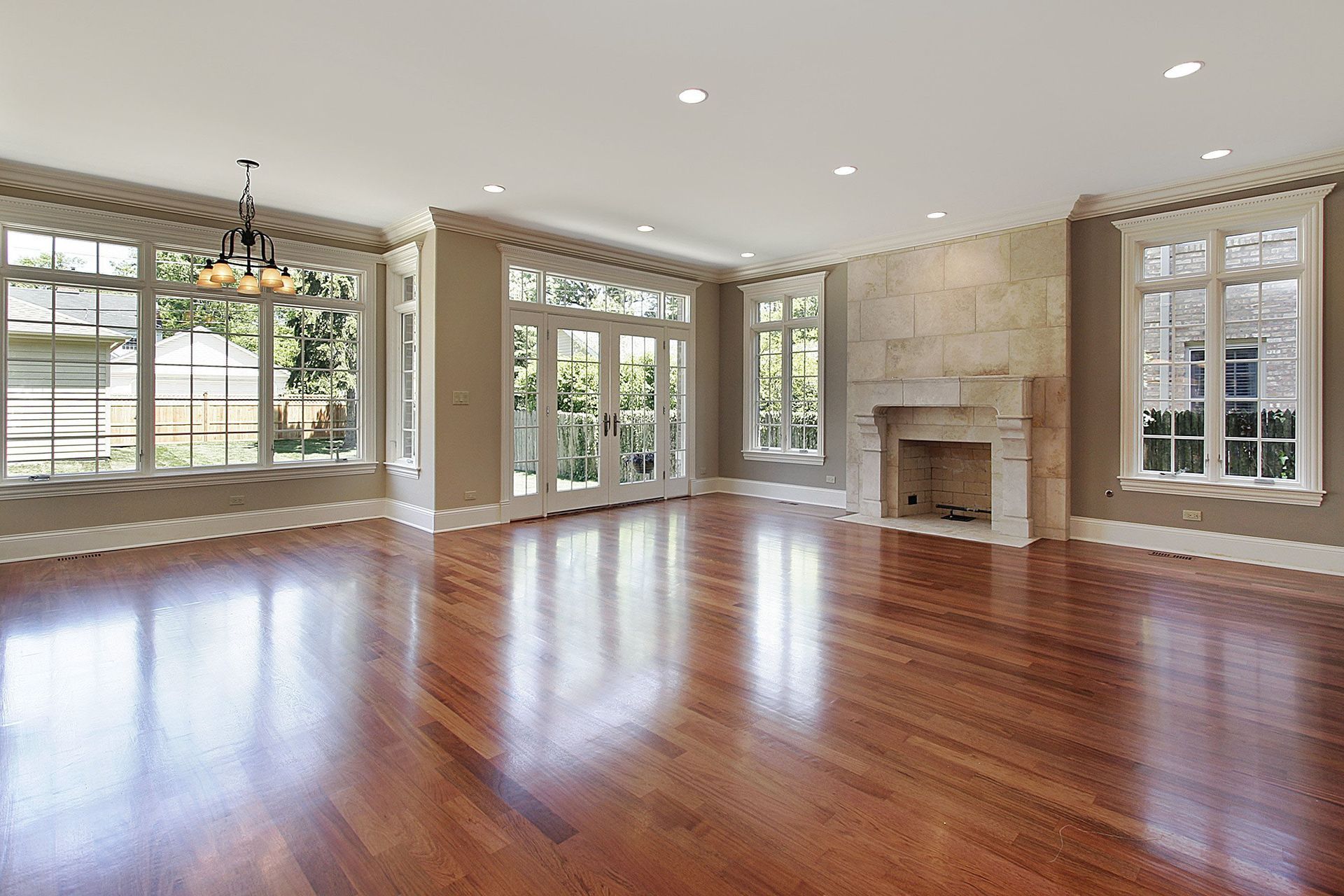August 21, 2025
Flooring is one of the most critical elements affecting a home's resale value. Among the various options available, hardwood flooring often stands out as an ideal choice for enhancing property value. Its aesthetic appeal, durability, and timeless nature make it a frequent favorite among homeowners and potential buyers alike. With these benefits in mind, it's essential to understand the intricacies of hardwood flooring to maximize its value proposition. In this comprehensive guide, we explore various aspects of hardwood flooring and how you can leverage them to boost your home's resale value.
Exploring Hardwood Flooring Types
When it comes to hardwood flooring, the first decision often lies between choosing solid or engineered hardwood. Solid hardwood consists of a single layer of wood, offering a classic appeal that can be sanded and refinished multiple times. On the other hand, engineered hardwood features multiple layers with a hardwood veneer on top, giving it more stability under varying environmental conditions. Solid hardwood excels in areas where humidity is not a significant concern, while engineered options are ideal for basements and areas with potential moisture exposure. The right choice between these two can impact not only the aesthetic appeal but also the long-term value and maintenance requirements. In some cases, homeowners even mix both options in different areas to balance cost and durability.
Selecting Wood Species for Style and Durability
The species of wood used for hardwood flooring plays a pivotal role in determining the floor's appearance and durability. Oak remains a popular choice due to its versatility and resilience, offering a traditional look that can adapt to various décor styles. Maple provides a contemporary appeal with its lighter color and subtle grain patterns, while cherry adds warmth and richness to a space. Each wood species comes with unique characteristics that not only appeal aesthetically but also contribute to the overall value of a home. Selection based on species can significantly impact the mood of a room and its attractiveness to potential buyers. Choosing wisely here is crucial because certain wood species can make your investment in new flooring stand out in a crowded market.
Customizing Grain Patterns and Textures
An important consideration in hardwood flooring is the grain pattern and texture that each option offers. The grain pattern, whether it be straight, wavy, or curly, can influence the flow and harmony of a space. Textures, ranging from smooth to distressed, also add different dimensions to the flooring's character. While smooth textures offer a sleek look, distressed textures provide a rustic and approachable charm. Understanding these options can help homeowners create an inviting atmosphere that aligns with potential buyers' tastes. By effectively selecting grain patterns and textures, homeowners can enhance the perceived quality and value of their new flooring.
Maximizing Value Through Installation Methods
The installation approach significantly influences both the appearance and the eventual resale value of hardwood flooring. Opting for professional installation ensures a polished finish and minimizes the risk of errors that could reduce the floor's lifespan. Skilled professionals understand the nuances of each type of hardwood and can advise on the best installation techniques. While DIY projects are tempting due to potential cost savings, they can lead to imperfections if not done correctly, impacting the value recovery at resale. According to JLC, homeowners can recoup around 70% to 80% of the cost of hardwood flooring installation at resale, emphasizing the importance of a quality installation. This is why investing in professional work is often as critical as choosing the right materials.
Preparing and Perfecting the Subfloor
Preparing the subfloor is a crucial step in ensuring the longevity and performance of hardwood flooring. An uneven or poorly prepared subfloor can lead to warping, buckling, or gaps that diminish the floor's appearance and functionality. Proper preparation includes cleaning, leveling, and securing the subfloor to create a stable foundation. This preparation not only improves the installation process but also ensures that the flooring remains durable over time. For homeowners installing new flooring, skipping this step can drastically reduce the lifespan and performance of the final result.
Choosing Installation Patterns for Visual Impact
Choosing the correct installation pattern contributes to the unique aesthetic appeal and perceived luxury of a hardwood floor. Popular patterns such as herringbone and diagonal offer visual interest and can make spaces feel larger and more dynamic. These patterns can be particularly appealing in open-concept homes, adding a touch of sophistication that draws in potential buyers. While more complex patterns may cost more initially, their impact on home appeal can justify the expense. Integrating an eye-catching pattern into your new flooring project can instantly set your home apart from comparable listings.
Maintaining Hardwood Floors for Lasting Value
Regular cleaning and care are essential for maintaining the pristine appearance of hardwood floors, which directly affects resale value. Daily sweeping or vacuuming prevents dirt and debris from scratching the surface, while periodic mopping with appropriate cleaners keeps the floors vibrant and appealing. Homeowners should avoid excessive moisture during cleaning to prevent warping and other damage. Using furniture pads and avoiding high heels on the floor can also minimize wear and tear. A consistent maintenance schedule will help your new flooring look its best for years to come.
Repairing and Refinishing for Longevity
Scratches, dents, and other minor damages are common with hardwood flooring but can be addressed effectively to retain value. Utilizing touch-up kits tailored to the specific wood type allows homeowners to disguise minor imperfections seamlessly. Larger dents or scratches may require professional attention to sand and refinish the damaged area. Quick attention to these issues prevents further damage and keeps the flooring looking its best. Refinishing can also refresh the look of older installations, making them appear as appealing as new flooring to prospective buyers.
Controlling Moisture and Humidity
Moisture and humidity control is pivotal for protecting hardwood flooring from damage and ensuring its attractive appearance over time. Using dehumidifiers in humid climates or maintaining consistent indoor temperatures helps in preserving the floor's condition. Seasonal changes often require adjustments in humidity management strategies to prevent the wood from expanding or contracting too much. Homeowners should regularly monitor the indoor climate to adjust accordingly. By taking proactive steps in handling moisture, the longevity of hardwood flooring can be significantly extended, safeguarding its investment value.
Enhancing Home Aesthetics with Coordinated Design
When it comes to design aesthetics, synchronizing the hardwood flooring style with the home’s décor can elevate the property’s market appeal. Coordinating flooring tones with paint colors, cabinetry, and furniture can create a cohesive look that appeals to potential buyers. The warmth or coolness of the floor should complement the atmosphere of the entire living space. Creating a harmonious environment not only enhances visual appeal but also conveys a sense of intentional design and sophistication. This strategic approach is especially important when introducing new flooring to refresh or modernize a home’s style.
Calculating ROI and Financial Benefits
Installing hardwood flooring is regarded as a significant financial investment, but understanding the potential returns can highlight its value. According to JLC, homeowners can recoup around 70% to 80% of the cost of hardwood flooring installation at resale, a considerable margin that makes it a favored renovation choice. The ability to refresh and refinish hardwood over time further extends its life and value. With new flooring, homeowners can boost both the functional and financial appeal of their property.
The strategic selection, installation, and maintenance of hardwood flooring significantly contribute to maximizing a home's resale value. By understanding the diverse range of hardwood options, installation techniques, and maintenance practices, homeowners can make informed choices that enhance their property's marketability. Contact our team at Elite Flooring Design today and learn more about our flooring services.





